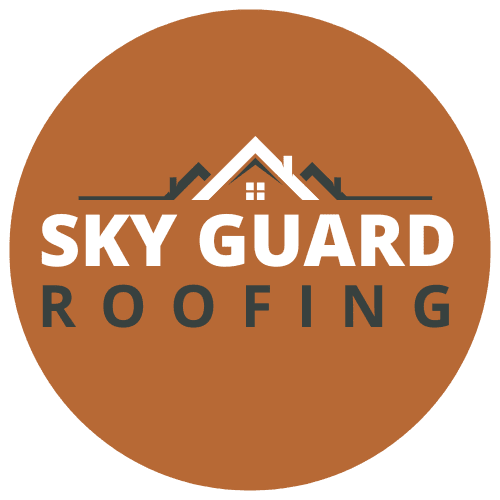
The Importance of Proper Roof Ventilation: Tips for a Healthy Roof

Posted in May, 2024
Proper roof ventilation is essential for maintaining a healthy and functional roof. It plays a crucial role in regulating temperature, reducing moisture buildup, and prolonging the lifespan of your roof. Without adequate ventilation, your roof is susceptible to a host of problems, including mold growth, wood rot, and shingle damage. At Sky Guard Roofing, based in Georgetown, we understand the importance of proper roof ventilation and its impact on the overall health of your home.
Effective roof ventilation allows for the proper exchange of air, ensuring that hot air escapes from the attic during the warmer months and preventing moisture buildup in the colder months. This balance of airflow helps regulate temperature extremes, reducing the strain on your HVAC system and ultimately lowering energy costs. Additionally, proper ventilation can prevent ice dams from forming on your roof, which can lead to costly water damage.
Now that we've discussed the importance of roof ventilation, let's explore some tips for ensuring that your roof has adequate ventilation.
Signs of Poor Ventilation
Identifying signs of poor roof ventilation early on can prevent costly repairs down the road. Common indicators include excessive heat buildup in the attic, mold or mildew growth on the underside of the roof deck, and ice dams forming along the eaves in winter. You may also notice musty odors or an increase in energy bills, indicating that your ventilation system is not functioning properly. If you observe any of these signs, it's crucial to address the issue promptly to avoid further damage to your roof and home.
Now that you know how to identify poor ventilation, let's discuss some tips for improving ventilation in your roof.
Tips for Improving Roof Ventilation
There are several strategies you can implement to improve ventilation in your roof and maintain its health and longevity. First, ensure that your attic is properly insulated to prevent heat from accumulating in the summer and escaping in the winter. Next, consider installing ridge vents or soffit vents to facilitate airflow through the attic space. These vents work together to create a continuous flow of air, preventing moisture buildup and temperature extremes.
Additionally, you can install attic fans or solar-powered vents to enhance ventilation and remove stale air from the attic. These devices help circulate air more effectively, especially in areas with limited natural ventilation. Finally, be sure to keep your gutters clean and free of debris to prevent water from backing up and causing damage to your roof and attic.
Now that you've learned how to improve ventilation in your roof, let's discuss the benefits of investing in proper roof ventilation.
Benefits of Proper Roof Ventilation
Investing in proper roof ventilation offers numerous benefits for homeowners. First and foremost, it helps extend the lifespan of your roof by reducing the risk of moisture-related damage, such as mold growth and wood rot. By maintaining a consistent temperature and moisture level in the attic, ventilation also helps prevent shingle damage and premature deterioration, saving you money on costly repairs and replacements.
Proper roof ventilation can also improve indoor air quality by reducing the buildup of harmful pollutants and allergens in the attic. This is especially important for homes with HVAC systems located in the attic, as poor ventilation can cause these systems to work harder and less efficiently. Additionally, by reducing heat buildup in the attic, ventilation can lower energy costs and improve overall comfort levels in the home.
Now that you're aware of the benefits of proper roof ventilation, let's discuss some additional considerations to keep in mind.
Additional Considerations
When it comes to roof ventilation, it's essential to consider the specific needs of your home and climate. Factors such as roof design, attic size, and local weather conditions can all impact the effectiveness of your ventilation system. Additionally, proper installation is key to ensuring that your vents function as intended and provide adequate airflow throughout the attic space.
Regular maintenance is also crucial for preserving the effectiveness of your ventilation system. Be sure to inspect your roof and attic regularly for signs of damage or obstruction, and address any issues promptly to prevent further damage. Finally, if you're unsure about the condition of your roof ventilation system or need assistance with installation or repairs, don't hesitate to contact a professional roofing contractor like Sky Guard Roofing for expert advice and service.
Now that we've covered all the important aspects of roof ventilation, let's wrap up with a reminder of the importance of proper ventilation for a healthy roof.
Conclusion
Proper roof ventilation is essential for maintaining a healthy and functional roof, protecting your home from moisture damage, mold growth, and temperature extremes. By implementing the tips outlined in this blog post, you can ensure that your roof has adequate ventilation and enjoy the many benefits it offers. If you have any questions or need assistance with your roof ventilation system, don't hesitate to reach out to Sky Guard Roofing at (302) 858-1378 or [email protected]. Our experienced team is here to help you keep your roof in top condition for years to come.
How Can We Help You Today?
Have questions about our roofing services or want to learn more about how we can help you? We're here to assist! Feel free to reach out to us with any inquiries or to schedule a consultation. Contact Sky Guard Roofing now for expert guidance and top-quality service!
